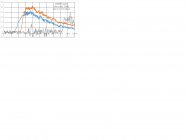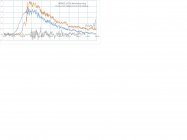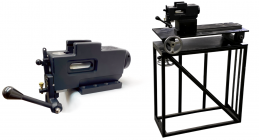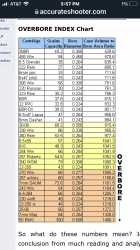The story
I have been doing something I thought would be interesting to some of you. Don’t laugh at my gun it’s a hammer and a hammer does not need a purl handle to hit a basketball. I have a Savage 220 for those that don’t know that is a 20 gauge bolt action slug gun. I wanted to load up some rounds and produce my own projectiles. Reading manuals on reloading shot shell always have a statement in there about never substitute any component. Other reloaders have said that what they do is they use the powder charge from a reloading manual but use a lighter projectile and look for deformed cases to insure they did not have excess pressure. I did not like that as a way of working up a load. I decided I needed a strain gauge to be able to compare the pressure of my loads to commercial loads. I designed and built 3 amplifiers which I collect data from with an oscilloscope. I save the data to a thumb drive load it into Excel. I use cheap ebay strain gauges and use them in full bridge configuration. The way the gun is built a strain gauge cannot be placed over the cartridge.
What I have
I have placed 3 strain gauge sets on the barrel. The first one is about 1.75” down the barrel from the bolt face. This means the bullet must move about 1.25” to 1.5” before the gauge can sense any pressure from the burning powder. The next set of gauges is about another 1.6 inches down the barrel. And the third is about 17.75” farther down the barrel. The third sensors are a little more sensitive than the others so there is a bigger signal for the same pressure. I shot and recorded several different commercial loads. Comparing 2 I saw something that was more pronounced than I had expected. Below readings are highest voltage (- the noise) while the bullet is still in the barrel.
Round ID___Gauge 1__Gauge 2 __Gauge 3
1600F/S slug__ .41V ___ .58 V _____.17 V
1900F/S slug___.39V ___.49V______.28V
The time it takes for the 1600F/S slug to get from 1 to 2 is shorter than for the 1900 F/S slug. Which agrees with what the voltage is telling me. The time it takes for the 1600 F/S slug to get from 2 to 3 is longer than for the 1900F/S slug again agreeing with what the voltage and the package labeling is telling me. Did not expect the 1600 F/S slug to have higher pressures on gauge 1 &2. With 1 &2 having higher pressure I did not expect gauge 3 to be lower.

I have been doing something I thought would be interesting to some of you. Don’t laugh at my gun it’s a hammer and a hammer does not need a purl handle to hit a basketball. I have a Savage 220 for those that don’t know that is a 20 gauge bolt action slug gun. I wanted to load up some rounds and produce my own projectiles. Reading manuals on reloading shot shell always have a statement in there about never substitute any component. Other reloaders have said that what they do is they use the powder charge from a reloading manual but use a lighter projectile and look for deformed cases to insure they did not have excess pressure. I did not like that as a way of working up a load. I decided I needed a strain gauge to be able to compare the pressure of my loads to commercial loads. I designed and built 3 amplifiers which I collect data from with an oscilloscope. I save the data to a thumb drive load it into Excel. I use cheap ebay strain gauges and use them in full bridge configuration. The way the gun is built a strain gauge cannot be placed over the cartridge.
What I have
I have placed 3 strain gauge sets on the barrel. The first one is about 1.75” down the barrel from the bolt face. This means the bullet must move about 1.25” to 1.5” before the gauge can sense any pressure from the burning powder. The next set of gauges is about another 1.6 inches down the barrel. And the third is about 17.75” farther down the barrel. The third sensors are a little more sensitive than the others so there is a bigger signal for the same pressure. I shot and recorded several different commercial loads. Comparing 2 I saw something that was more pronounced than I had expected. Below readings are highest voltage (- the noise) while the bullet is still in the barrel.
Round ID___Gauge 1__Gauge 2 __Gauge 3
1600F/S slug__ .41V ___ .58 V _____.17 V
1900F/S slug___.39V ___.49V______.28V
The time it takes for the 1600F/S slug to get from 1 to 2 is shorter than for the 1900 F/S slug. Which agrees with what the voltage is telling me. The time it takes for the 1600 F/S slug to get from 2 to 3 is longer than for the 1900F/S slug again agreeing with what the voltage and the package labeling is telling me. Did not expect the 1600 F/S slug to have higher pressures on gauge 1 &2. With 1 &2 having higher pressure I did not expect gauge 3 to be lower.














